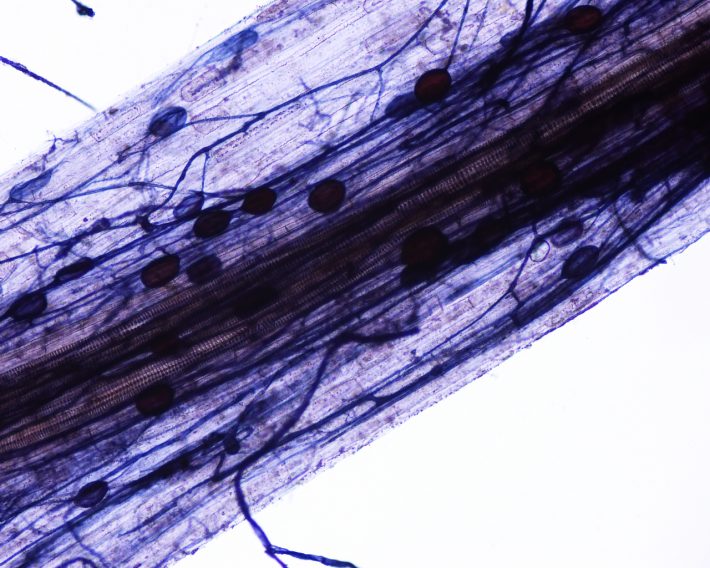Press Release: Fungal microbes as biofertilizers in agriculture and gardening
Is the reward greater than the risk?
Companies are increasingly producing fungal inoculants and marketing these as biofertilizers to improve plant growth and soil health. However, there is little or no evidence of their effectiveness and possible ecological risks, as shown in a new study published in the journal Functional Ecology today.

Arbuscular mycorrhizal fungi (AMF) are naturally occurring microorganisms that form symbiotic relationships with plant roots, assisting them with water and nutrient uptake and improving plant performance. Despite the increased use of commercial AMF inoculants by growers around the world, research shows that success is mixed. Although some plants have responded positively to inoculation, no change or even decreased plant performance have been reported in most cases.
In this research article, ecologists from universities in Canada, the U.S. and Australia stress that it is still unclear how useful commercial AMF inoculants are. Most of the existing inoculation experiments and studies were conducted under artificial greenhouse conditions and not of much value in the field.
Dr Miranda Hart from the University of British Columbia’s Okanagan campus: “AMF are difficult to monitor. These fungi cannot be seen with the naked eye and can only be measured using a microscope or DNA methods, which goes beyond the scope and budget of most farmers.”
Even in extremely degraded soils, it is practically impossible to distinguish between inoculants and fungi that naturally occur. Measuring and comparing AMF inoculant abundance in the field requires highly specific molecular probes, a very challenging and costly method.
There is also little and only inconsistent knowledge of how AMF inoculants establish and spread. Most field studies have only measured short-term establishment if at all.
Perhaps more concerning is that the ecological consequences of the use of fungal inoculants are unknown.
“The problem is we have little idea of how these fungi disperse, but we know they can move via soil, air and even with migratory birds. Thus, if an AMF inoculant is able to disperse beyond its intended zone and become invasive, it may have the potential to negatively impact native fungal communities, and have devastating consequences for plant diversity and ecosystem functioning.”
“This is a clear case where industrial practices are not aligned with current scientific knowledge. Our study concluded that the present use of AMF inoculation is at best a gamble, and at worst an ecological threat”, Hart warns.
There is a pressing need for long-term inoculation trials investigating how these commercial ‘biofertilizers’ establish and how they may affect existing fungal and plant communities, which can then help develop best practices. Until then, the authors suggest farmers and gardeners should apply inoculants only when necessary and rather use methods such as reduced tillage and inputs to foster overall soil biodiversity.
Read the full article (freely available for a limited time):
Hart MM, Antunes PM, Chaudhary VB, Abbott LK. Fungal inoculants in the field: Is the reward greater than the risk?. Funct Ecol. 2017;00:1–10. DOI: 10.1111/1365-2435.12976
Like what we stand for?
Support our mission and help develop the next generation of ecologists by donating to the British Ecological Society.